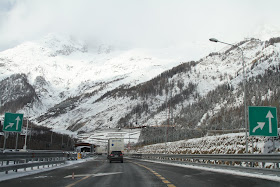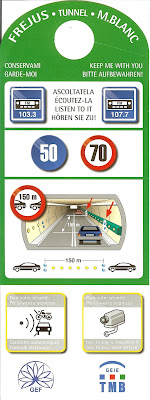Pontboset Bridge

Le Moulin des Aravis
We were staying in Mondovì, Piemonte and our next major stop was in Morges Switzerland (outside of Geneva) and we wanted to get one hike in the Valle d’Aosta region. What to do? So we poked around a bit and found the Le Moulin des Aravis in Pontboset (Fraz Savin) on the Torrent Ayasse. We arrive at Le Moulin after a little trial and error (okay, a lot, it was dark) and we get situated. It's cold outside – or maybe it isn’t and we are not used to it? The owners Piera and her husband Mauro are busy making sausages in the kitchen with their son and some friends. The air smells like mustard. We have a dinner reservation for 7:30 at the restaurant. It looks like we'll be the only folks here. Before dinner, we get on line - good connectivity here in the midst of the mountains. We could live here. 7:30 comes and there is our table set for two and the table set for the family and friends for six. Piera serves us and it is all wonderful. We start with hot, stewed castagna (chestnuts) served with pads of butter. Piera then sneaks us an ample taste of the raw filling (beef) for one of the sausages, with some pepper and other spices added – piccante and delicious. For the primo, we have risotto with wild mushrooms (called chiodini - nails) and parsley and blue berries and it tastes good. For a secondo, we have pork and roasted potatoes, followed by a sampling of cheeses – all local of course. A dessert of apple strudel that was staring at us all through dinner is next and then some after-dinner drinks and then to bed. Wow, what a great welcome. Simple food, well done.
Hike Overview
Our intended hike for the only full day in the area is to the Santuario di Retiempo. After breakfast at Le Moulin we set off for the hike that starts about 3 km down the road in Pontboset town. (The frazione or neighborhood of Savin where the B&B is located is part of the commune.) In Pontboset there are two public parking areas, one at each end of the town. We find parking easily – but then again we are very off season.
The hike from Pontboset is about 6 km (3.7 mi) round-trip. The elevation change was about 702 m (2,303 ft). We started at 784 m (2,572 ft) and ended up around 1486 m (4,875 ft). We leave the car at 10:30am. The hike in the beginning is steep but dry as we follow an old mule trail which then merges into a narrow road. In the middle of the hike as we gain some altitude and the sun shifts in the sky it becomes sunny and warm. Toward the end of the hike it becomes more difficult as we are hiking in snow up to our knees and we are not equipped. Jeans frozen and feet cold but we reach the sanctuary. We relax and eat lunch for about 30 minutes. For lunch we snack on many things we’ve accumulated in the last few weeks including some sweets from Cascina Bringin consisting of rice paper sandwiching caramelized nuts and honey – named after for a saint whose name escapes us.
The Santuario di Retempio was closed (it closes in late September). That is always the Travelmarx style: visiting on off hours and nobody around, but we prefer it that way usually. We head back and arrive in Pontboset (or Pont Bozet) at 3:30pm. The town is deserted on this weekday afternoon. Stone houses clustered together with those big flat stones for the roof, clinging to the hillside. In the steep mountain areas here the position of the sun is so critical to what you experience. We see on the north side of mountains that seem to get no or very little sun in the winter. Note to self: pick a village on the south side.
Le Moulin des Aravis Near the Torrent Ayasse

Bridge in Pontboset

Near the Start of the Hike Retempio Hike

View from the Hike – Near Crest

Looking Back and Down on Pontboset

Signs

Along the Hike

Steps Up to the Santuario

The Santuario

The Santuario Up Close

View form the Santuario

Description of the Mountain Ranges to the North

View Northwest into the Valley and Strada Regionale di Champorcher























































